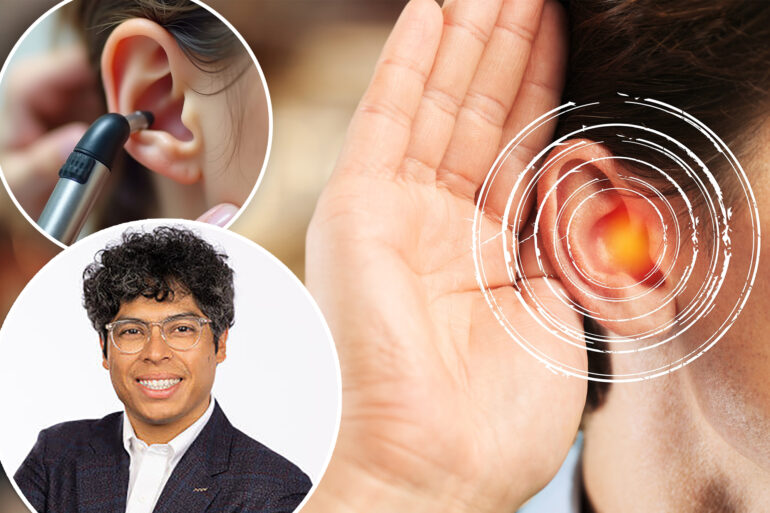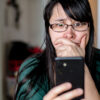🔴 Website 👉 https://u-s-news.com/
Telegram 👉 https://t.me/usnewscom_channel
Here’s to better hearing!
Hearing loss is a common problem that affects about 15% of US adults, or roughly 40 million Americans. It can vary from mild to severe and stem from several different causes.
Presbycusis is the gradual decline in hearing that occurs with age. Natural changes in the inner ear, middle ear and nerve pathways to the brain are often to blame. Hearing loss can begin in the 30s or 40s and become more noticeable over time.
Ear infections, head injuries, certain medications and a range of diseases, including diabetes, Alzheimer’s and autoimmune disorders, can also affect hearing.
One easy way to protect against hearing loss is to reduce exposure to loud noises. Blaring sounds can damage the delicate hair cells in the inner ear’s cochlea, paving the way for hearing problems.
“New York is known to be excessively loud, and with that, hearing protection should be used in most everyday situations,” Dr. Seth Weible, an audiologist with Manhattan Audio South, told The Post.
“When commuting on the subway and train — or even just going for a walk in Manhattan — using active noise cancellation is a great way to protect your hearing.”
Even seemingly minor decisions, like where you sit in public places, can significantly impact your exposure to noise. Weible reveals the best spots to park yourself to prevent hearing loss — and the steps to take if you’re having trouble hearing.
Where to sit in a restaurant
You probably know that the seats closest to the bar, restrooms, entryways and aisleways are the noisiest, making it difficult to communicate with your group.
While a corner chair seems like the most natural choice, Weible recommends sitting across from the corner.
“The rest of your party should fill in the corner seats, so you can best hear with your back to the crowd of other tables,” Weible explained. “This allows your body to act as part of a noise block, and you can focus on the voices coming right at you.”
Where to sit on transit
As you might imagine, first class is the first-class auditory selection on airplanes.
“It’s always better to sit close to the cockpit,” Weible said. “If you’re in the main cabin, you want to be far from the wings to avoid engine noise as well as far from high-traffic areas like bathrooms.”
Go for the quiet cars on trains — and if that’s not possible, pick a seat away from doors and bathrooms.
On buses, you don’t want to strain to hear automated announcements and verbal calls for stops. Plopping your posterior near the driver is best.
How to determine if you’re losing your hearing
Friends and family members often recognize hearing issues first.
“The most common area of loss is in high frequencies, which is responsible for sound clarity, not volume,” Weible said. “In other words, while you may ‘hear’ most sounds, you often misunderstand or misinterpret words.”
Your brain doesn’t acknowledge the error, but loved ones will notice you misspeaking.
If your friends and family aren’t tuned in, try evaluating your TV habits.
Constantly turning up the TV volume to hear it better could be a sign that something’s amiss.
“Speech clarity and volume are two different things, and just because we make something louder does not mean it will become clearer,” Weible said.
“If you find yourself turning up the volume in hopes of making speech clearer, this is a good indication that you need to have a full evaluation completed.”
What to do if you suspect hearing loss
Weible recommends an auditory evaluation. A hearing specialist looks at the mechanics of the patient’s ear and eardrum function, assesses their hearing in terms of intensity and volume and gauges their understanding of speech in quiet and noisy environments.
If there is impairment, the specialist determines if it’s correctable or permanent.
“It’s important to have a full-picture process and approach to hearing, as precise changes can improve people’s quality of life nearly instantly,” said Weible, who does this testing at Manhattan Audio South.
Which technologies can help improve hearing
After conducting hearing tests, an audiologist can prescribe a hearing aid and custom-fit the device.
There are also over-the-counter hearing aids for people with mild to moderate hearing loss.
Apple AirPods Pro 2, which has a hearing aid feature, is a “good starting point” for those exploring their options before fully committing to a medical-grade hearing aid, Weible said.
“There is a big difference in terms of what can be achieved with a doctor,” he added. “However, the best hearing aid is one that you will actually wear instead of leaving in a drawer to collect dust. So, if that means starting with an OTC, that’s great.”
If you decide to go with a prescription device, you might be surprised at how much the technology has evolved since your grandpa’s days.
For example, modern hearing aids, “such as the ReSound Vivia, have Auracast built into them, which allows users to stream [theater or concert] audio directly to their hearing devices,” Weible said.
Then it doesn’t matter where you sit in the theater or concert hall — you get an immersive listening experience without unwanted racket.

